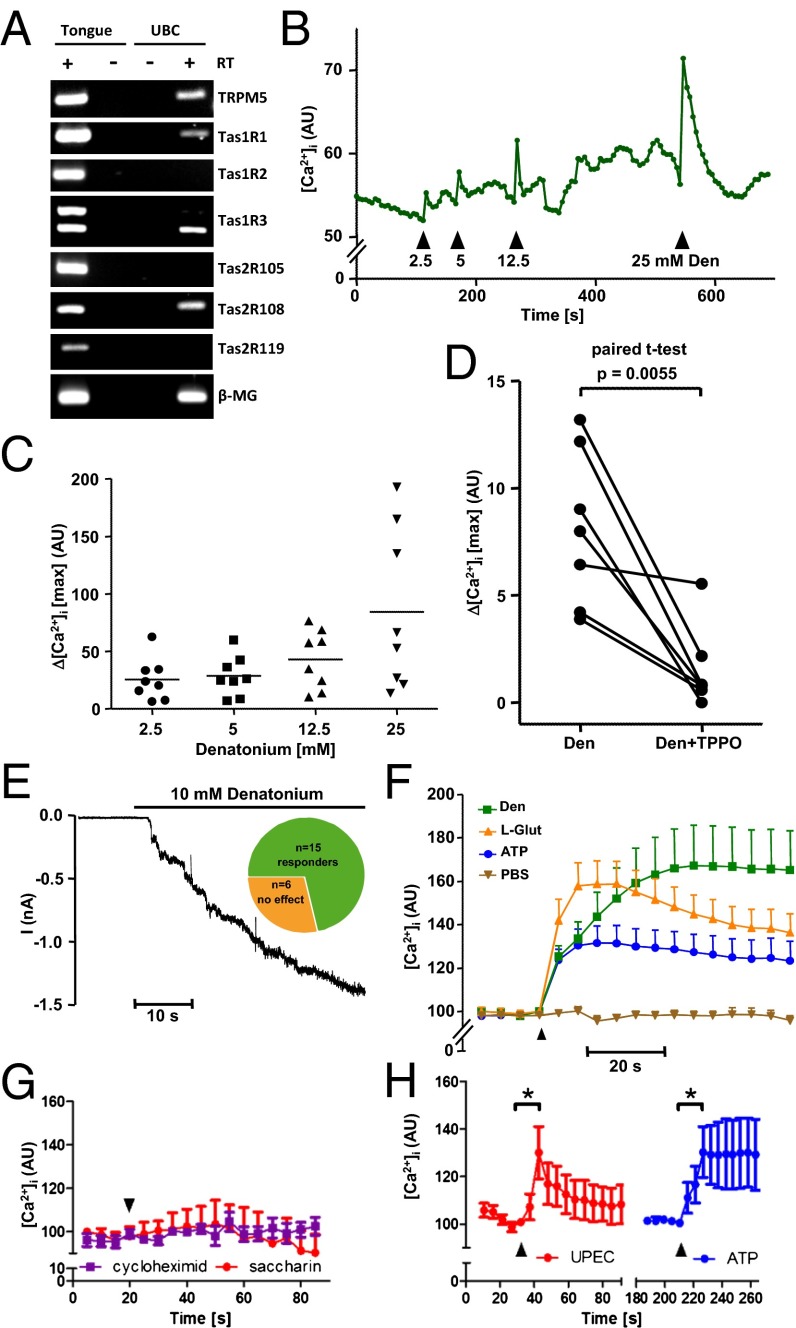Fig. 4.
Urethral cholinergic brush cells are polymodal chemosensors. (A) RT-PCR, agarose gel. Urethral brush cells (UBCs) were isolated by magnetic beads coated with TRPM5 antibody. Tongue, positive control; β2-microglobulin (β-MG), housekeeping gene; +/− RT, aliquots processed with/without reverse transcription. (B and C) Dose-dependent increase in [Ca2+]i in dissociated UBC in response to the Tas2R108 agonist denatonium. All drugs were added under continuous flow in the chamber, so that indicated concentrations were reached initially and then washed out. (B) Confocal laser scanning recording of changes in Calcium Orange fluorescence in a single cholinergic (eGFP+) brush cell. The y axis depicts arbitrary units (AU) correlating to [Ca2+]i. (C) The y axis depicts maximum [Ca2+]i increases in eight cholinergic cells in response to increasing denatonium concentrations. (D) Same technique as in B and C. Shown are maximum [Ca2+]i increases evoked by 25 mM denatonium before and after application of the TRPM5 inhibitor TPPO (0.25 mM) in seven cholinergic brush cells. (E) Whole-cell patch-clamp recording, with membrane potential clamped to −60 mV. Increased inward current was observed in 15 of 21 cells (responders). (F–H) Same technique as in B–D. (F) Superimposed calcium increases in 32 polymodal cells that responded to all three stimuli (0.5 mM ATP, 25 mM denatonium, and 25 mM l-glutamate). (G) In contrast, dissociated cells did not respond to the Tas2R105 agonist cycloheximide (Cyc; 0.1 mM) or to the artificial sweetener saccharin (Sac; 5 mM). (H) Heat-inactivated uropathogenic E. coli (UPEC; 2–5 × 107 cfu) induced [Ca2+]i increase to the same extent as ATP. Graphs depict mean and SEM. *P < 0.05, paired t test.

